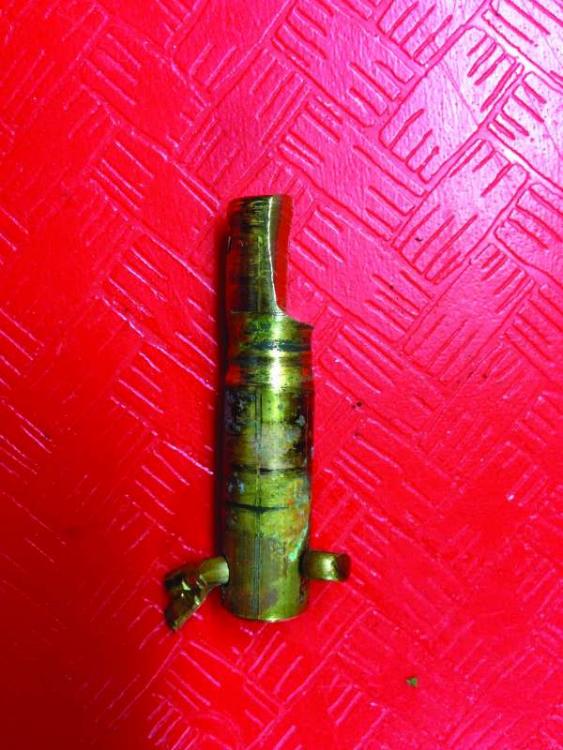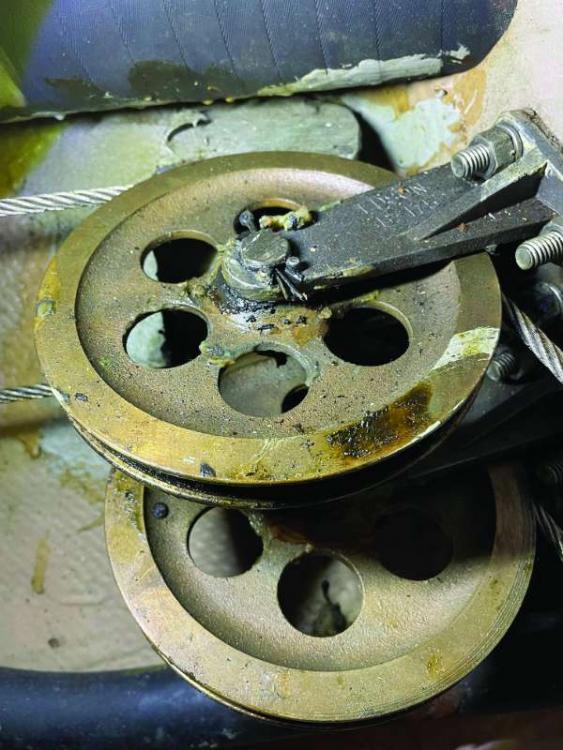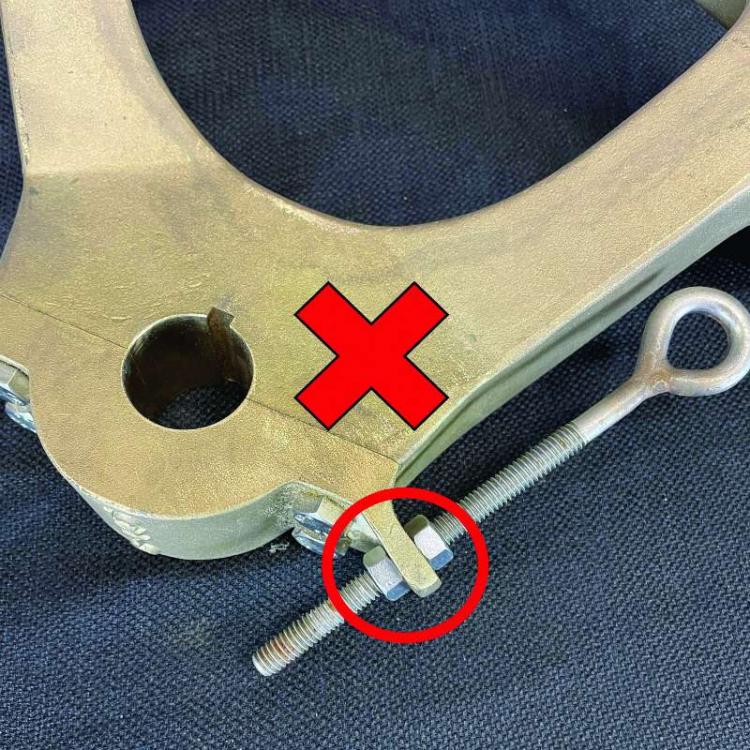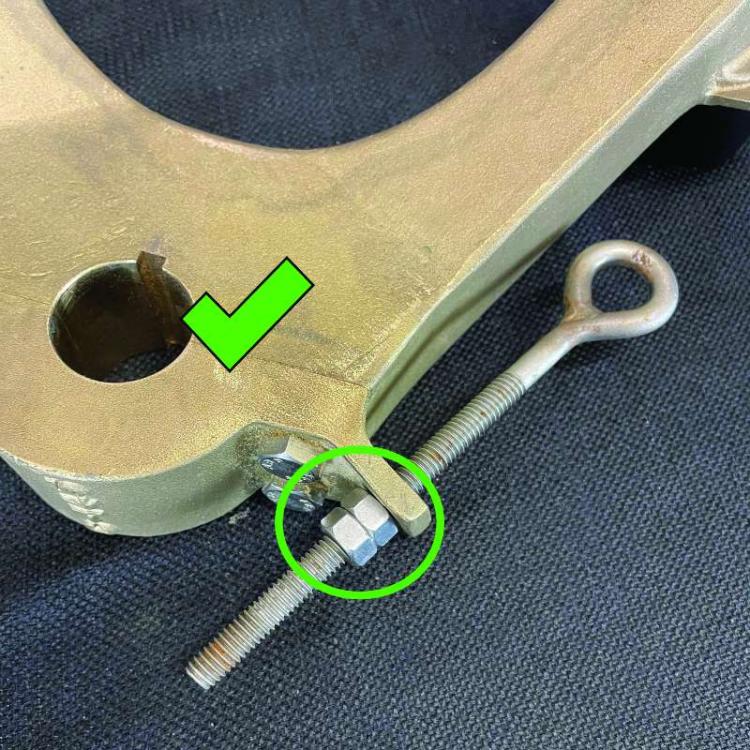Don't Let Your Sailboat's Steering System Be "Out of Sight, Out of Mind"
Because most of a boat’s steering system is either hidden in the pedestal or below decks in places people rarely go, it too often suffers from the “out of sight, out of mind” phenomenon and rarely gets the upkeep it needs to operate at its best. Pre-purchase marine surveys often give an incomplete examination of sailing steering systems. What happens between the wheel and the rudder is critical to performance and safety, and whether through poor maintenance or just old age, a boat’s steering system can be a huge safety risk and a budget busting time bomb.

First, determine which type of steering you have. The most common is the chain-and-wire type, where the wheel turns a cog in the pedestal that drives a chain, which transitions to wire cable and winds up on a quadrant (slice of pie) or radial (full pie) attached to the rudder post. The exposed wire cable can get to the quadrant through a series of sheaves, or it can run through conduit. A great steering system can be made with either.
There are other systems ranging from modified rack and pinion systems (such as Edson CD-I, Lewmar Cobra) to traditional worm gear and full rack and pinion systems. These are less common, so we’ll focus on standard chain-and-cable systems here.
The first place to start is the pedestal. The wheel, pedestal, and pedestal guard are the most important handholds in the cockpit and can be subject to huge stress in rough conditions. Movement of the pedestal can indicate a damaged pedestal base or a wet cockpit sole core. Damaged or bubbling paint/powder coat indicates corrosion, which is inevitably terminal to the pedestal. Reasons for this include poor electrical grounding and general damage over years of use. Pedestals typically have a 30-year service life, so if your target boat was built in the 1990s or prior, take a very close look at the pedestal and know that the pedestal will eventually need replacement.

Next, check for play and roughness in the wheel, both rotationally and fore and aft on the steerer shaft. Rotational play usually indicates insufficient cable tension, which will damage system components over time. Roughness indicates steerer bearing issues, bad cable routing, damaged rudder bearings, damaged cable, damaged conduit, or all of the above. Fore and aft play of the wheel on the steerer shaft is a result of a broken snap ring or damaged bearing, either of which is an urgent but relatively easy fix.
Unless you know specifically that the chain and cable have been replaced in the last 10 years, plan to replace them immediately. Replacing the engine control cables at the same time is a good idea, since they are on the same replacement schedule and the prep work for both is the same. If the boat has conduit, plan to replace that as well, since worn conduit will quickly damage new steering cable. This will cost a few hundred dollars and a few hours of boat work but is the single most important piece of preventative steering maintenance. The worst corrosion in metal occurs where oxygen doesn’t get, which is conveniently also the part where you can’t see; so even though a chain might look okay, if it’s 10 years old, it should be replaced.
Underneath the pedestal is what’s called the idler plate, attached to which are two sheaves. Check the idler plate for corrosion and damage, as this is both the backing plate for the pedestal and the cornerstone of the cable system; it’s a critical part. Evaluate the cable runs from the sheaves to see that the cable runs are fair. Bad cable runs will be evidenced by wear on the sheave edges and metal shavings in the bilge underneath the sheaves. Bad cable runs can be adjusted, and depending on the level of sheave damage, the sheaves my need replacement. Check each sheave and idler base in the system the same way, all the way back to the quadrant/radial.


Every sheave pin should be replaced while you are changing out the chain and cable, which is the easiest time to replace them.
Quadrants and radials are durable pieces and only need replacement in case of profound corrosion or damage. Damage is most often caused by grounding or the absence of an effective rudder stop. The single worst thing you can do to a steering system is to let go of the wheel while the boat is in reverse. The force of the rudder slamming over can destroy the whole steering system. Rudder stops profoundly reduce the amount of damage that such an incident would cause. If the quadrant or radial is in good condition, a coat of a protectant such as Boeshield will help protect it.
If the autopilot ram is connected directly to the radial or quadrant, remove it immediately. Quadrants and radials are not designed for the loading from an autopilot ram, and when the ram breaks the quadrant/radial, your only steering will be with the emergency tiller. Using a separate autopilot tiller removes this risk and gives a separate redundant steering system if either the pilot or the primary steering system is damaged.
Many companies that produced steering systems during the sailboat boom of the 70s and 80s are long since out of business. Sourcing replacement parts can be a nightmare since compatibility of parts between manufacturers is limited. Generally, chain and cables are all interchangeable, as are quadrants and radials.
After through hulls, steering is the most important system on a boat. Knowing the status of a boat’s steering system before you make an offer helps avoid risk to your safety and bank account down the road.
By Dave Kirkpatrick of Edson International
Questions? Email [email protected].




